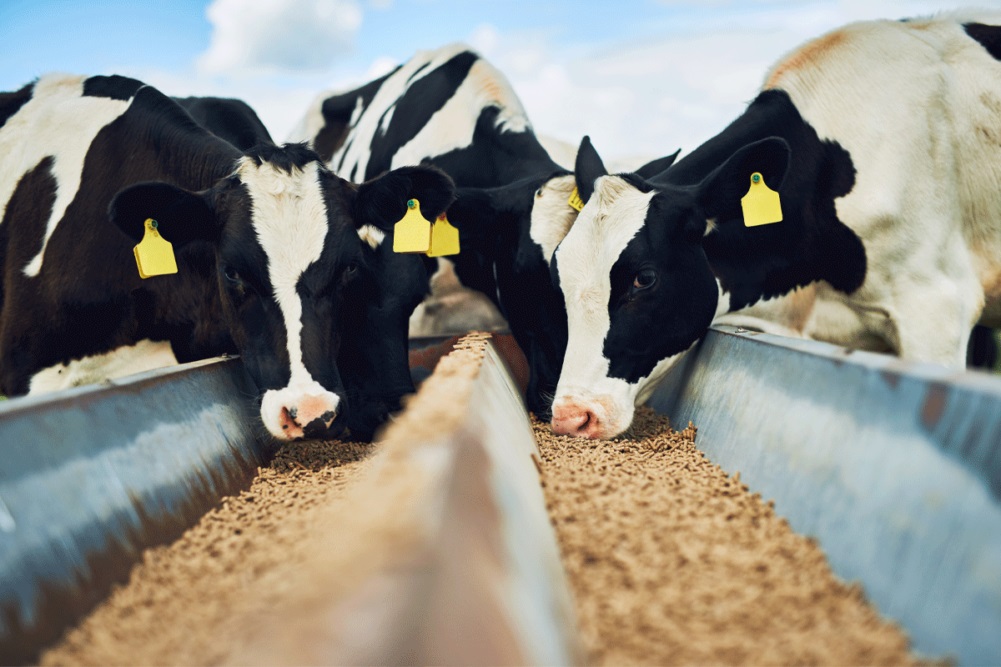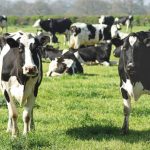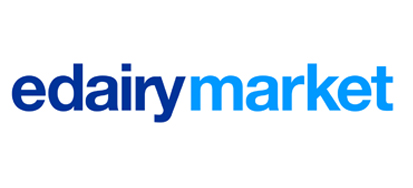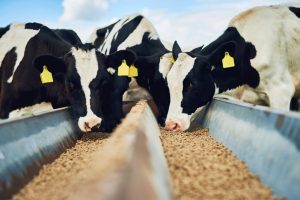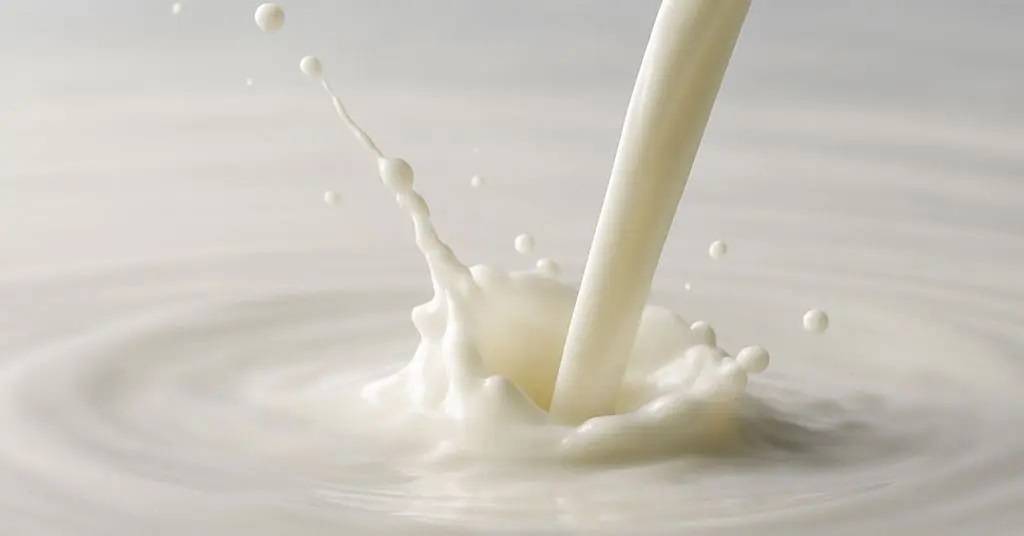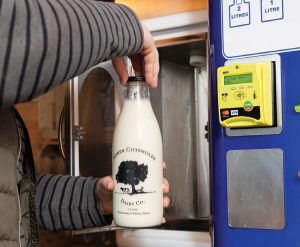
The April Federal order benchmark Class III milk price was announced by the USDA at $17.48 per hundredweight (cwt.), down $1.14 from March, but $1.98 above April 2024. It is the lowest Class III price since April 2024. The four-month Class III average is at $19.16, up from $15.77 a year ago, and $18.46 in 2023.
Late Friday morning Class III futures portended a May price at $18.50, June at $17.82 and July at $18.19 with a peak of $18.63 in September.
The Class IV price was $17.92 per cwt., down 29 cents from March, $2.19 below a year ago, and the lowest since Oct. 2021. Its average stands at $19.19, down from $19.86 a year ago, and compares to $18.80 in 2023.
Another drop in the All Milk Price and a rise in alfalfa hay pulled the milk feed price lower again. The USDA’s latest Ag Prices report shows the March ratio at 2.46, down from 2.68 in February, and compares to 2.15 in March 2024.
The index is based on the current milk price in relationship to feed prices for a ration consisting of 51% corn, 8% soybeans and 41% alfalfa hay. One pound of milk would purchase 2.46 pounds of dairy feed of that blend.
The All Milk Price averaged $22.00 per cwt. with a 4.36% butterfat test, down $1.60 from February which had a 4.43 test, and compares to $20.60 in March 2024, with a 4.27% test.
The national corn price averaged $4.57 per bushel, down a penny from February, but 21 cents above a year ago. Soybeans averaged $10.20 per bushel, unchanged from February, but $1.60 below a year ago. Alfalfa hay averaged $167 per ton, up $8 from February, and $29 below a year ago.
Looking at the cow side of the ledger, the March average cull price for beef and dairy combined was at $140 per cwt., up $5 from February, $16 above March 2023, and $68.40 above the 2011 base average.
Quarterly milk cow replacements averaged $2,870 per head in April, up $210.00 from January, and $750 above April 2024. Cows averaged $2700 per head in California, up $100 from January, and $800 above a year ago. Wisconsin’s average at $3,130 per head was up $270 from January and $750 above 2024.
“The All-Milk price was lower for the second month in a row, while feed costs were higher for the fourth straight month to put the milk-feed ratio lower,” says dairy economist Bill Brooks, of Stoneheart Consulting in Dearborn, Missouri.
“Milk production margins moved lower for the third time in the past four months but remained at historically high levels and were $1.76 per cwt. below February,” he stated. “Income over feed costs in March were above the $8 per cwt. level needed for steady to higher milk production for the seventeenth month in a row. Input prices were mixed with two of the three input commodities inside of the top ten for March all-time. Feed costs were the ninth highest ever for the month of March and increased 16 cents per cwt. from February. The All-Milk price stayed in the top ten for the month, at the third highest ever recorded for the month.”
“Milk income over feed costs for 2024 were $13.39 per cwt.,” says Brooks. “Income over feed in 2024 was above the level needed to maintain or grow milk production, and up $5.39/cwt. from 2023’s level.”
“Milk income over feed costs for 2025, using April 30 CME settling futures prices for milk, corn, and soybeans plus the Stoneheart forecast for alfalfa hay, are expected to be $12.84 per cwt., a loss of 55 cents per cwt. versus 2024. Income over feed in 2025 would be above the level needed to maintain or grow milk production, and down 40 cents from last month’s estimate,” Brooks concludes.
This week’s Crop Progress report shows U.S. corn planting at 24%, as of the week ending April 27, up from 12% the week before, 1% behind a year ago and 2% ahead of the five-year average. 5% was emerged, 1% behind a year ago.
Soybeans were at 15% planted, up from 11% the previous week, 1% ahead of a year ago and 1% ahead of the five-year average.
The latest weekly slaughter report showed 45,400 dairy cows were sent to slaughter the week ending April 19, down 1,900 from the previous week and down 9,700 or 17.6% from a year ago. Year to date, 835,600 head had been culled, down 79,800 head or 8.7% from a year ago.
Cash dairy prices started May mostly higher as much of the dairy industry gathered this week in Chicago for the American Dairy Products Institute annual conference. Speaking in the May 5 Dairy Radio Now broadcast, HighGround Dairy’s (HGD) Curtis Bosma said the eyes of attendees are on domestic demand, which for the past year or so has been for weakened, particularly in food service.
The “silver lining” is the discount that U.S. cheese and butter prices are to the world. He said there was a lot of chatter at the conference about export opportunities, although there are some complications with respect to what types of cheese and butter the U.S. produces. In the end, however, the most important factor is price, he said. “If we’re cheap enough, those deals will always find a way to come together.”
When asked how big an impact the tariff tit for tat was having, Bosma said, “As we stand here today, with countries that we do have tariffs with and where the tensions are, the only region or country that is somewhat problematic is China.”
He said there has been a lot of front loading going on in first quarter, and not just in dairy. If you look at the U.S. first quarter gross domestic product (GDP) data, you see that it posted its first negative year to year growth in a couple years.
He added that a lot of that fall, considering how GDP is calculated, was due to “the net importer-export factor that’s in there. With all these looming tariff threats, it’s pretty safe to assume that most companies or businesses that rely on goods or materials from overseas are bringing in things or restocking things as quickly as possible to make sure they weather any storms that may arise later this year.”
Meanwhile, CoBank says “U.S. food and agricultural exports to Mexico have surged 65% over the past four years, making it the fastest growing export market for a host of American agricultural commodities and products. Mexico’s growth as a destination for U.S. exports has been spurred by the country’s booming post COVID-19 economy and a rapidly growing manufacturing sector.”
“The economic upswing has allowed Mexican consumers to expand their traditional diet, and U.S. food and agricultural producers are helping meet the country’s growing demand for meat, poultry, dairy, processed foods and feed grains. In 2024, U.S. food and ag exports to Mexico climbed to $31.4 billion, slightly below Canada, the top market at $32.4 billion,” according to CoBank.
A new research brief from CoBank’s Knowledge Exchange, says “Mexico will likely surpass Canada to claim the top spot for the first time in 2025 despite some emerging headwinds.”
Checking prices in Chicago, after the cheese plunged 13.50 cents the previous week, the cheddar blocks closed May 2 at $1.76 per pound, up 6 cents on the week, but 3 cents below a year ago. The barrels saw their Friday finish at $1.7550, 5 cents higher, and 12.50 cents below a year ago. Sales totaled 28 loads of block on the week and 132 for the month of April, down from 138 in March. Barrel sales totaled 12 for the week and 66 for April, up from 56 in March.
Central region cheese demand has been strong in recent weeks but contacts tell Dairy Market News (DMN) that spot activity was somewhat muted this week. Spot loads were mixed, as cheesemakers said inventories are tight while others said they’re are becoming more available. Milk output is trending higher in the region and milk at mid-week was reported as low as $7-under Class. Milk is plentiful, says DMN.
Milk output has passed spring peak in the West, but cheese manufacturers have enough available. Production varies from somewhat lighter to somewhat stronger. A few manufacturers note tight spot load availability regardless of what type of cheese is requested. Domestic demand varies from lighter to steady. Food service remains comparatively less robust than retail, while export demand is steady to strong. Sellers say U.S. prices remain competitive, according to DMN.
Spot butter fell to $2.24 per pound Tuesday, lowest CME price since Dec. 22, 2021, but it rallied and closed Friday at $2.33, up 5 cents on the week, but still 74.50 cents below a year ago when it was trading at $3.0750. There were 20 CME sales on the week and 116 on the month, down from 164 in March.
Central butter makers are actively churning as cream remains plentiful, says DMN, but increasing seasonal demand from ice cream makers has drawn inventories down somewhat from early spring. Cream multiples have increased slightly at the bottom of the range, but most are at or near flat market. Domestic butter sales are steady, meeting expectations. Spot loads are available and some are freezing product for use later in the year.
Seasonally strong milk production is beginning to tick down from the peak of spring for some parts of the West. However, butterfat component levels continue to be more than sufficient, helping to keep cream widely available. Butter manufacturers were keeping their churns busy. Inventories are generally growing despite strong export demand. Domestic demand is steady, but retail demand remains comparatively more robust than food service. Domestic prices remain competitive internationally despite trade policy changes that have taken place this year, according to DMN.
Grade A nonfat dry milk saw its close at $1.1950 per pound Friday, up 0.75 cents on the week, and 6.50 cents above a year ago. There were 22 sales on the week and 50 for the month, down 3 from March. The weak dollar has made U.S. exports more attractive.
Dry whey closed Friday at 52 cents per pound, up 1.50 cents and 12.50 cents above a year ago. There were 5 sales on the week and 33 for the month, up from 19 in March.
Checking the rear view mirror, U.S. milk production decreased 0.2% in 2024 to 226 billion pounds, according to the USDA’s Milk Production, Disposition, and Income Summary issued this week. The rate per cow, at 24,178 pounds, was up 61 pounds from 2023. The annual average number of milk cows on farms was 9.34 million head, down 42,000 from 2023.
Cash receipts from milk marketings totaled $50.7 billion, up 10.5% from 2023. Producer returns averaged $22.56 per cwt., up 10.7% from 2023. Marketings totaled 225 billion pounds, down 0.2% from 2023 and included whole milk sold to plants and dealers and milk sold directly to consumers. An estimated 985 million pounds was used on farms where produced, down 1.1% from 2023. Calves were fed 92% of this milk, with the remainder consumed in producer households, according to the report.
Meanwhile, the Dairy Products Summary reported total cheese production in 2024 at 14.2 billion pounds, up 0.7% from 2023. Wisconsin was the leading state, with 3.586 billion pounds of that total, or 25.2%, with 116 producing plants.
California produced 2.481 billion pounds in 47 plants.
Italian varieties, totaled 6.03 billion pounds, up 2.9% from 2023, and accounted for 42.3% of total cheese in 2024. Mozzarella accounted for 79.5% of the Italian production, followed by parmesan with 7.4%, and provolone with 6.4%. Wisconsin was the leading State with 28.3% of the total.
American output hit 5.58 billion pounds, down 3.0% from 2023, and accounted for 39.1% of total cheese in 2024. Wisconsin again was the leading state at 19.7%. Cheddar output came in at 3.785 billion pounds, down 5.2%.
Butter production totaled 2.24 billion pounds, up 5.9% from 2023. California was the Number 1 butter producer, accounting for 29.8% of that total.
Nonfat dry milk for human consumption totaled 1.67 billion pounds, down 10.7% from 2023. Skim milk powders, at 599 million pounds, were down 13.3%. Dry whey totaled 853 million pounds, down 9.0%. Lactose, at 1.11 billion, was up 0.3%, and whey protein concentrate totaled 495 million pounds, down 1.9%.
Good old fashioned ice cream totaled 886 million gallons, up 2.7%. Low fat ice cream amounted to 412 million gallons, down 6.6%. Sherbet totaled 26.4 million gallons, down 6.9%, and frozen yogurt totaled 37.8 million, down 5.6% from 2023
In politics, the Consortium for Common Food Names (CCFN), National Milk Producers Federation and U.S. Dairy Export Council applauded the U.S. Trade Representative’s (USTR) decision to spotlight protection of common food names in the agency’s 2025 Special 301 Report issued last week.
A joint press release stated “The annual report outlines major global intellectual property concerns. It highlighted the European Union’s persistent campaign to monopolize common names such as “parmesan” and “feta” through protectionist geographical indication (GI) policies. These efforts restrict the use of widely recognized food and beverage terms to only specific European producers and effectively cut U.S. producers out of certain key markets.”
“The European Union’s approach to geographical indications is entirely unacceptable. It intentionally crowds out fair competition by restricting market access for U.S. and international producers,” said Jaime Castaneda, executive director of CCFN. “Too many trading partners have been coerced into imposing trade barriers for products using common food and beverage names. We appreciate USTR’s ongoing recognition of this issue but urge the U.S. government to stop trading partners to succumbing to European pressures and imposing trade barriers on U.S. products.”
Lee Mielke is a graduate of Brown Institute in Minneapolis, Minnesota. He’s formerly the voice of the radio show “DairyLine” and his column appears in agricultural papers across the U.S. Contact him at lkmielke@juno.com.
You can now read the most important #news on #eDairyNews #Whatsapp channels!!!
🇺🇸 eDairy News INGLÊS: https://whatsapp.com/channel/0029VaKsjzGDTkJyIN6hcP1K
